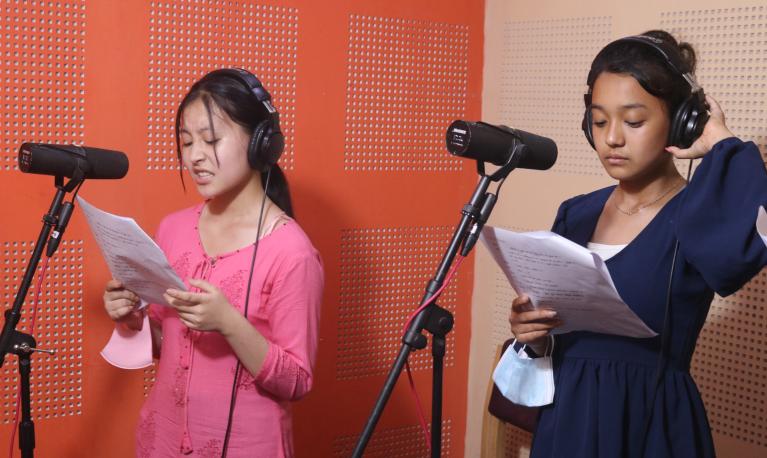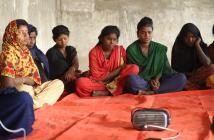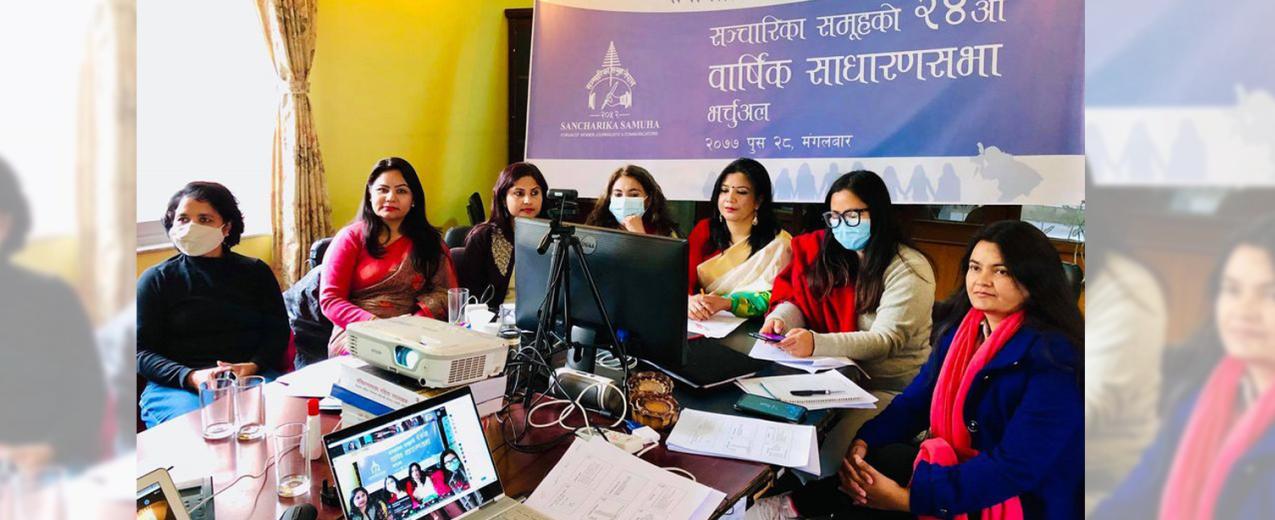
- Case study
- 1 November 2021
Creating media content to change norms: Sancharika Samuha, Nepal
- Author: Faria A. Nasruddin
- Published by: ALIGN
Sancharika Samuha (SAS) is a Nepali non-governmental organisation of women communicators. It was established after the Beijing conference and Platform for Action (BPFA) in April 1996 to promote gender-sensitive media reporting in Nepal. Its main goals are to:
- create a gender equal society by enhancing the capacity of media to promote equity and equality-based development
- enhance representation of female journalists in the Nepalese media and strengthen the capacity of female journalists by improving their professional skills and their access to the Nepalese media, and ensure press freedom.
Theory of change
SAS believes that mainstreaming gender in the media at every level – national, provincial, and local – and in every form, whether print, television or radio, can have a positive impact on society. The ultimate goal is to mobilise mainstream media to influence state policies, acts, law, bylaws, and rules and regulation in favour of women.
Methods
SAS conducts a range of programmes on gender advocacy in the media industry, raising awareness through public outreach programmes and media campaigns, and through media monitoring reports.
To mainstream gender-sensitivity in the media, SAS works with different United Nations agencies and diplomatic missions to coordinate advocacy across different media organisations. It trains both female and male journalists in ethical media writing and other issue-based topics. Past workshops include: ‘Gender Equality in Politics and the Role of the Media’; 'Media in Elections'; and ‘'Media in Elections' for women journalists’.
SAS also produces its own content, including a television programme, ‘Samakon’, airing on Kantipur television from 2013 to 2016. This discussed gender issues and women’s rights with a focus on gender-based violence and resources for survivors. The 127-episode programme, broadcast across more than 40 districts in Nepal, was open to public participation and more than 3,000 people took part in its in-person discussions.
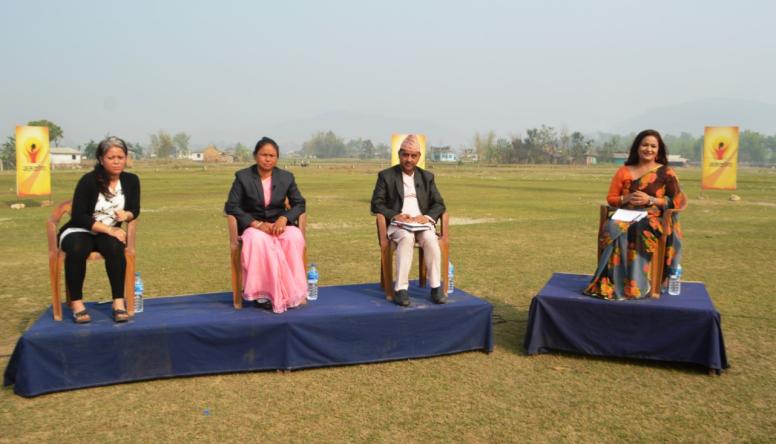
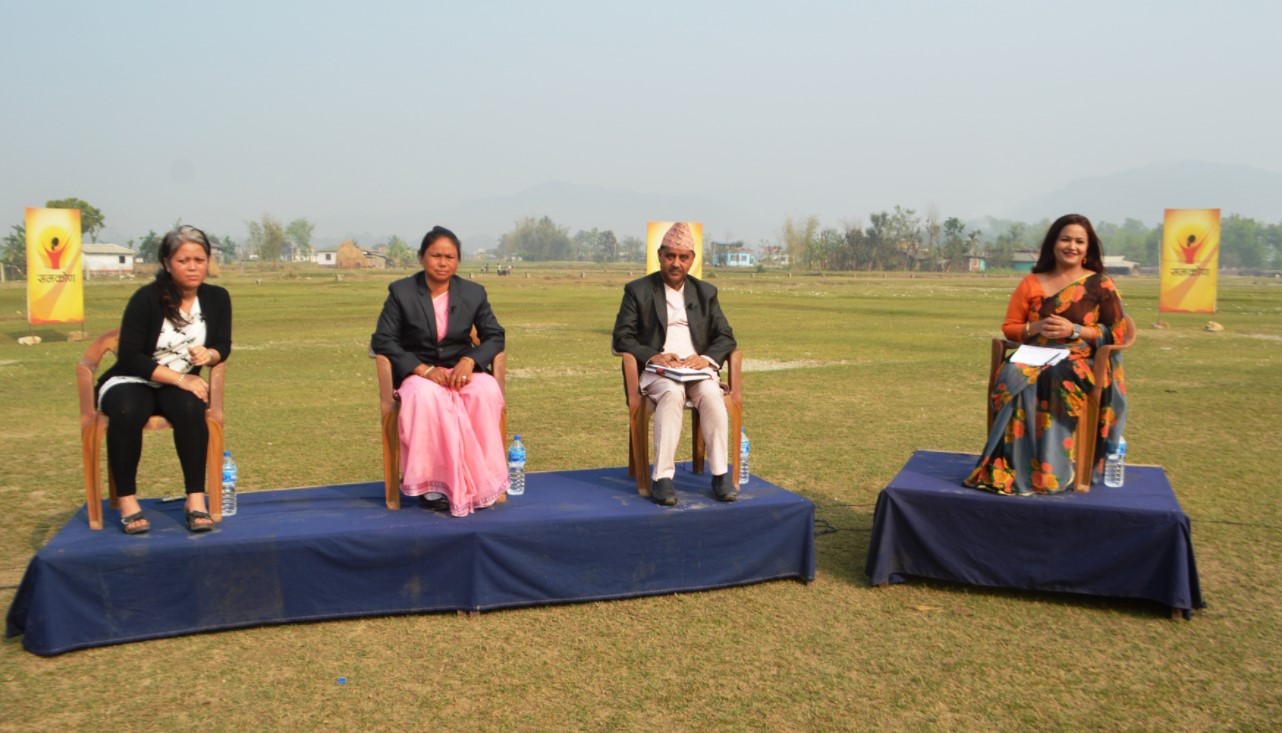
SAS also broadcasts two weekly radio programmes, ‘Sancharika Radio Magazine Samakon’ and ‘Nasuniyeka Aawaj’ [Unheard Voices]’, which dig into the issues of gender-based violence. The programmes aims to bring these issues to the notice of duty bearers, and support survivors of such violence by giving them the chance to share their stories of injustice and create awareness among people for a gender-friendly society. 'Nasuniyeka Aawaj' airs on radio stations and the radio programmes in each district (Dolakha, Ramechhap, Sindhupalchok, Sunsari, Siraha and Kapilbastu) is specific to that locale.
Finally, SAS engages in advocacy at the national level. It produces public service announcements, which are broadcast on radio and television, as well as on YouTube and other digital formats.
Evidence of change
‘In the previous years, Nepali media has been focusing on political issues only,’ says Nitu Pandit, General Secretary of SAS. ‘They are not raising gender issues or gender norms. Now the practice is changing, and they have been seeing all the content through gender lens. They are being more gender sensitive, embracing the issue. They are giving priority to women writers as well, who write or talk on gender issues.’
Looking to the future
In general, SAS is hopeful about the prospects for gender-sensitive media reporting in Nepal. While change may not happen overnight, a slow shift away from the ‘stereotype mindset’ or ‘patriarchal thinking’ and toward gender-sensitive reporting is the first step in providing a model for the rest of society to follow.
- Tags:
- Broadcast media, Media
- Countries / Regions:
- Nepal
More case studies
Interview
15 December 2021

Interview
6 December 2021
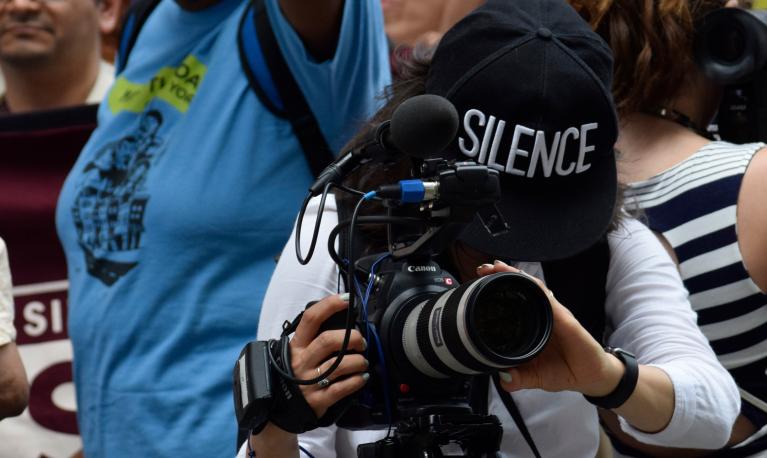
Case study
1 November 2021

Case study
29 October 2021

Case study
29 October 2021
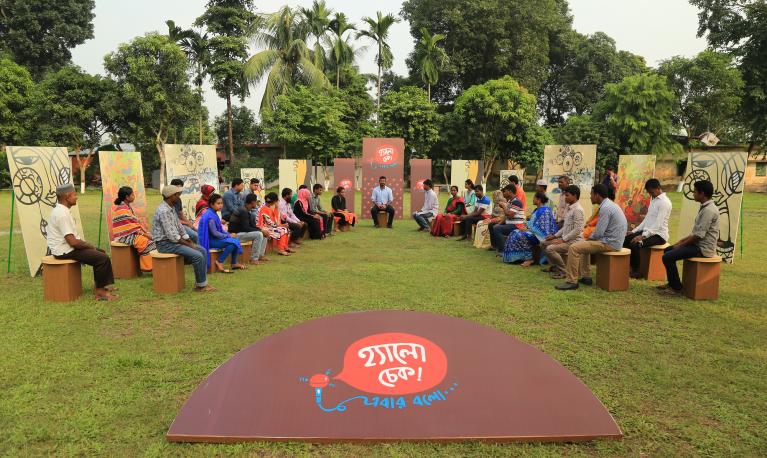
Case study
29 October 2021
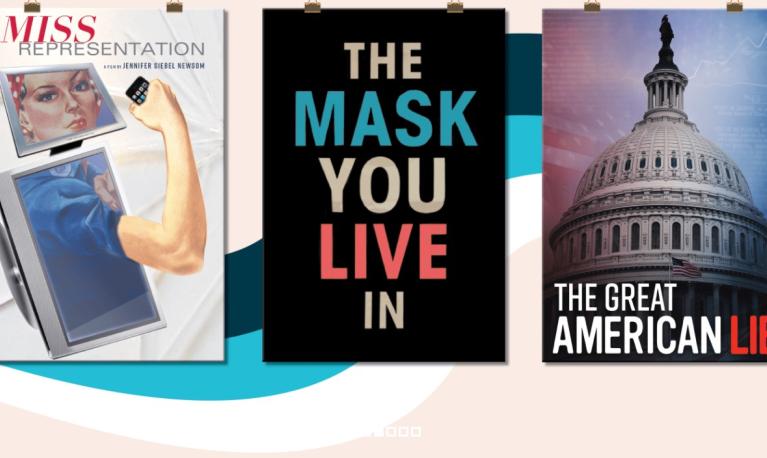
Case study
29 October 2021
